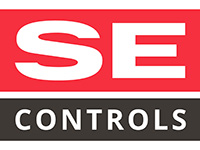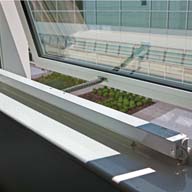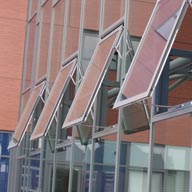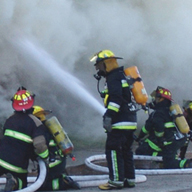Dr. Chris Iddon of SE Controls comments on hospital overheating from The Climate Change Commission report.
The recently reported issue of climate change causing overheating in hospitals with an associated increase in related deaths, not only highlights the risk to patient health from high temperatures and inadequate ventilation, but also questions current thinking on building design.
According to findings from forthcoming research by Cambridge University, headed by Professor Alan Short, around 90% of UK hospital wards are of a design type that makes them susceptible to overheating.
Extracts from the report released by the Climate Change Commission, led by Lord Krebs, indicate that building design and construction are key contributory factors to the overheating and patient health issue. In addition, the Commission has already suggested that the retro-fitting of air-conditioning plant would be uneconomic, so the immediate focus is already centred on cost effective and energy efficient measures of addressing the problem, such as natural ventilation.
While hospital overheating can be readily managed with natural ventilation solutions, the additional benefits, particularly in hospital wards, is that it can also reduce the build up of pathogens, viruses and associated infections by encouraging air movement and ‘flushing’ stale air from the building. Independent research undertaken by Dr. Cath Noakes of Leeds University shows that when windows are closed to reduce heat losses and energy costs, there is an increased risk of infection due to a four-fold increase in airborne pathogens.
Although air quality in critical health and clinical areas of hospitals needs to be of the highest standard, these principles, in many instances, have been compromised in other parts of hospital design. In pre-operation, recovery and general wards, the opportunity for ventilation is often limited to a 100mm wide strip of open window - a limit governed by essential risk directives to protect patients from harm and provide a safe environment.
However, simple modifications could readily be implemented to the ventilation solution, such as high-level vents or window opening, which would to not only maintain patient safety, but also provide adequate ventilation to manage temperatures and improve indoor air quality.
When the lack of cooling is linked to other building design issues, such as south facing glazing, low ceilings, thin walls and the cumulative heat build up from multi-storey structures, there will be and inevitable impact on hospital temperatures
Temperature data research and analysis that I have undertaken with Professor Kevin Lomas, as part of the wider Cambridge University team lead by Professor Short, reveals that in numerous hospital wards across the UK there are number of key factors influencing overheating risk. The work has not only highlighted the resilience of traditional, heavyweight ‘Nightingale wards’ to overheating, but also indicated that solar gain is the key cause of internal temperature increase.
Alongside improved ventilation and increased air movement through carefully planned vents to maintain patient safety, the introduction of measures to limit heat gain, such as the deployment of external shading devices will help reduce overheating risk.
Hospital overheating is a very real issue and this report highlights that most are not only incapable of dealing with any predicted gradual increase in temperatures that may result from climate change, but are also likely to be susceptible to heatwaves.
The links between building design practice and how regulations will need to evolve to manage overheating and assist infection control are likely to be a key outcomes from the research, which will impact all aspects of architecture and construction.
While some retro-fitted solutions can provide effective answers to overheating, the time to review building design standards, specifications and regulations, particularly for future hospital construction projects, is probably already here.
Climate change, hospitals and patient well-being
| T | (01543) 443060 |
|---|---|
| F | (01543) 443070 |
| E | info@secontrols.com |
| W | Visit SE Controls's website |
| Lancaster House, Wellington Cres, Fradley Pk, Lichfield, Staffs, WS13 8RZ |




